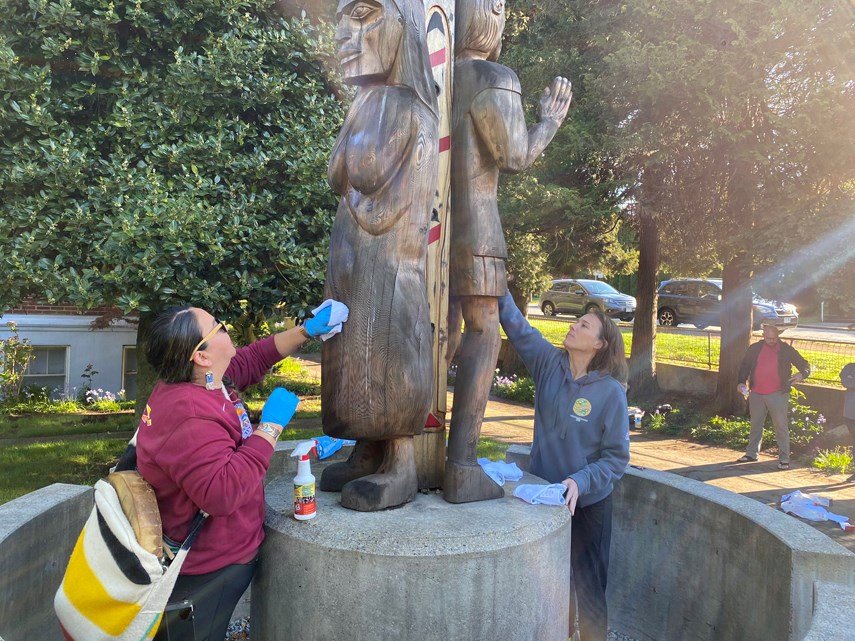North Vancouver RCMP are investigating after a vandal defaced a memorial dedicated to the victims of St. Paul’s Indian Residential School in North Vancouver.
A teacher walking by the carving outside the former Sisters of St. Paul convent on Sixth Street saw on Wednesday that the carving had been spray painted blue, and reported it.
“She noticed graffiti on both the male and female figure that was sexual in nature,” said Brad Baker, district principal with North Vancouver School District. “It disrespects the survivors that went to the residential school and the people that have passed away that went there.”
Between 1898 and 1959, more than 2,000 children from the Squamish, Tsleil-Waututh, Sechelt and Musqueam nations were taken from their parents and forced to live at St. Paul’s Indian Residential School, where the Catholic regional secondary school St. Thomas Aquinas now stands.
The carving by Jason and Morris Nahanee was placed there to coincide with the work of the Truth and Reconciliation Commission of Canada. The North Vancouver school district now uses the memorial as a learning tool for students.
“It reminds us now of difficulties that many of our children had had with the residential schools and abuse they endured there,” Baker said
Right now, police say there is little evidence to link to a suspect. There were no spray cans left at the scene and the surface of the monument wouldn’t hold fingerprints. There is no surveillance footage and so far, no witnesses have come forward. But DeVries said, North Vancouver RCMP would like to hear from anyone with information about the crime.
“When something like this happens, and it involves a public monument which has references to our First Nations communities… we are aware of a sensitivity in our community and the need to go above and beyond in making sure that we protect the integrity of our work toward reconciliation,” he said.
A neighbour in the area told police the paint had been there for upwards of two weeks.
Because they don’t know who is responsible, it’s impossible to say whether it was motivated by hate, DeVries added.
“It’s a type of graffiti that’s juvenile,” he said.
More than anything, the person responsible is in need of education, Baker said.
“We don’t know why it was put there but ultimately whoever did put the graffiti there, obviously they have some issues themselves understanding our shared history here, Indigenous and non-Indigenous,” he said. “Whoever did do it, we're more than ready to bring them into our circle to help teach them.”
Baker put out a call for volunteers on Wednesday evening and a crowd of 14 showed up, ready to work Thursday morning. After ceremonial smudging and an offering of tobacco, they took turns scrubbing off the blue paint.
“We wanted to make sure that we got rid of it as fast as we can to honour our ancestors. … It brought us together as a community, Indigenous and non-Indigenous, to correct what was done wrong,” he said. “As we continue on our journey of truth and reconciliation, it’s important to continue to come together to learn from each other and appreciate each other in our own ways.”



